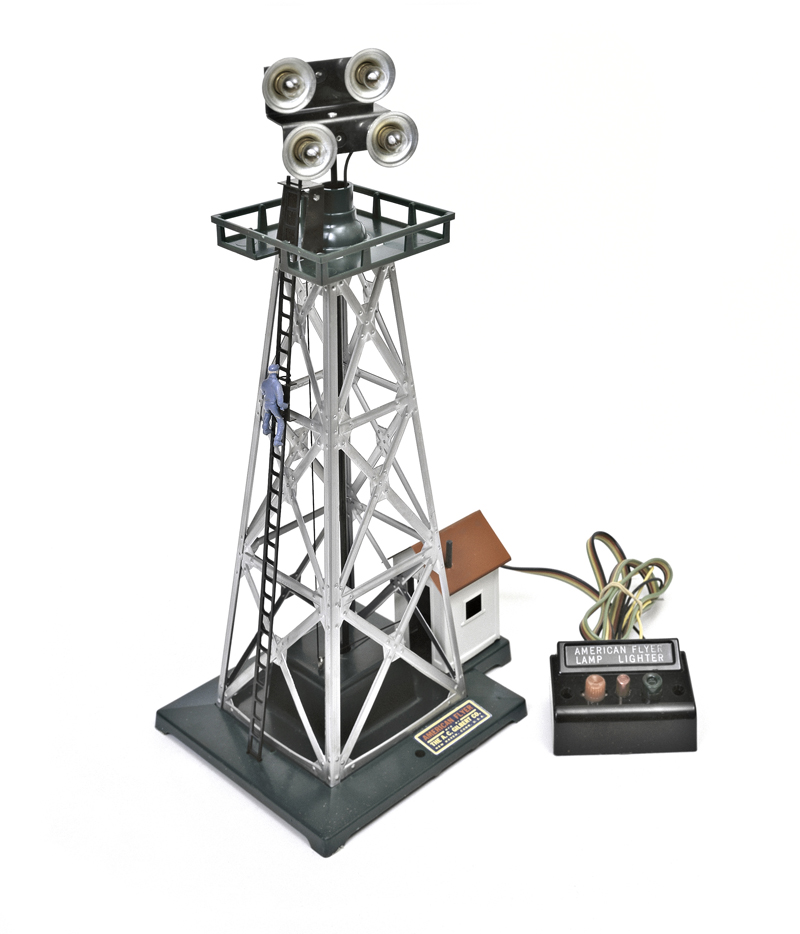
Lionel wasn’t alone in making landmark accessories after World War II. Colber and Marx brought out great ones. Above all, the A.C. Gilbert Co. developed outstanding S gauge accessories for its American Flyer line. One of the most significant and collectible was the No. 23780 Gabe the Lamp Lighter. The 23780, arguably the last great […]
Read More…
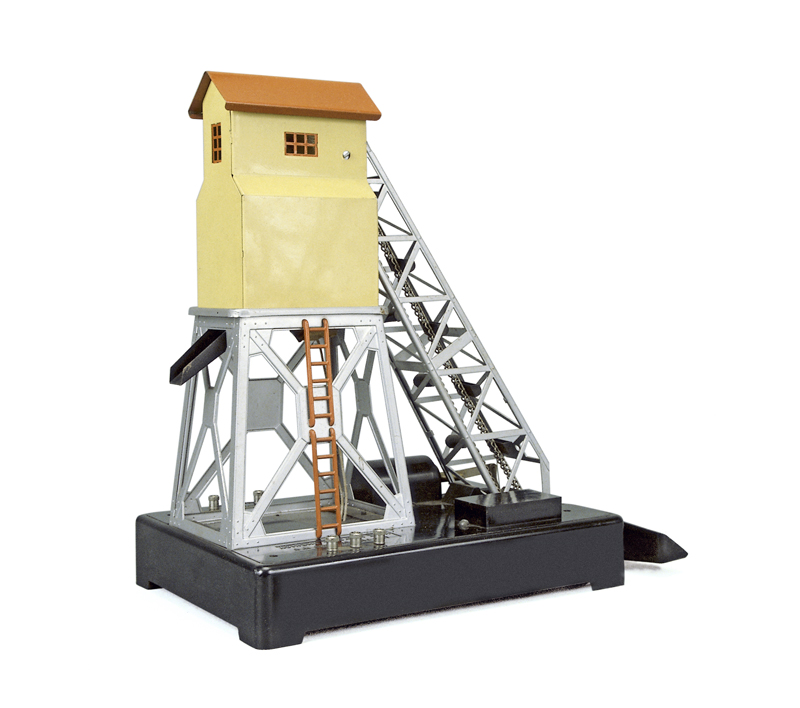
The trend of motorized accessories replicating activities associated with railroading began at the Lionel factory in New Jersey. Let’s spotlight the revolutionary No. 97 coal elevator, which made its debut in 1938. Prototypical – not always accurate The idea of a vertical loader with buckets on a chain that lifted coal from a receiving bin […]
Read More…
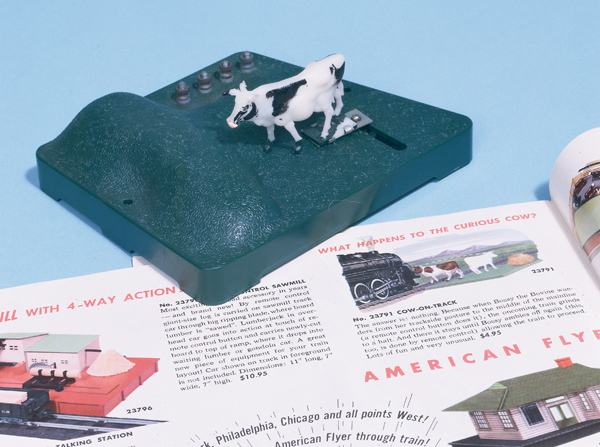
The world of animated O and S gauge toy trains accessories was, for all intents and purposes, a fairly serious one during the postwar era. Operating freight loaders, stations, and other facilities sought to imitate the activities associated with big-time railroading and industrial labor. There wasn’t time for frivolity. Where animals were concerned, however, all […]
Read More…
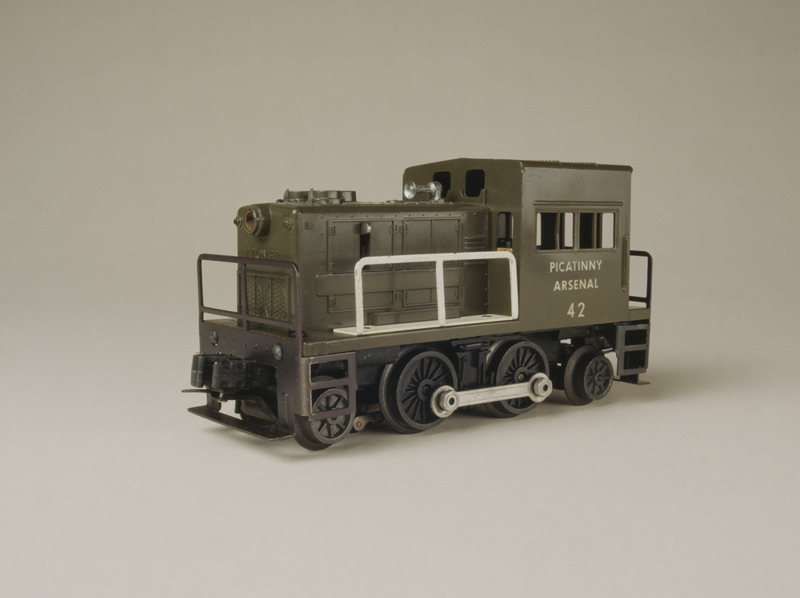
Joshua Lionel Cowen had adopted a firm stance on the need to avoid manufacturing “war toys.” Even on the eve of World War II, when Lionel was already producing precision instruments for the armed forces, Cowen refused to bend, unlike his peer and rival, Louis Marx. Everything changed in 1955, probably because the mood of […]
Read More…
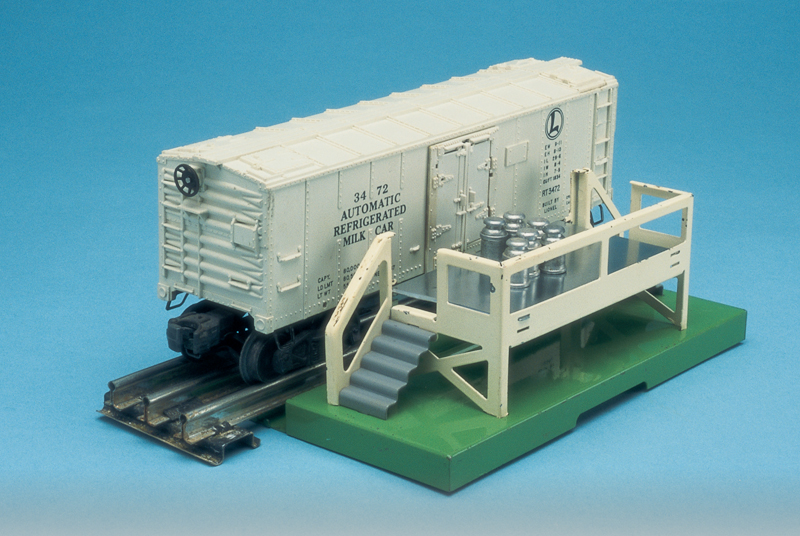
When you reach a certain age, every birthday deserves to be called a big one .Among other things, my celebration in July got me thinking about the toy trains that happened to be available when I was born in 1951. Specifically, I wondered what my dad might have bought for his infant son if he […]
Read More…
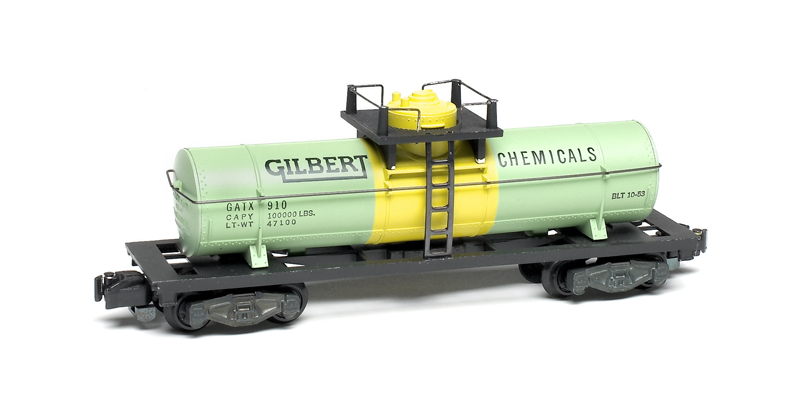
Despite the lack of play value in tank cars, boys wanted them because they reflected what kids saw in full-sized trains. So prewar manufacturers like Lionel and Ives developed tank cars, but hoped to do more with them. The breakthrough came in 1932, when Lionel worked out a licensing agreement with Sun Oil Co. Tank […]
Read More…
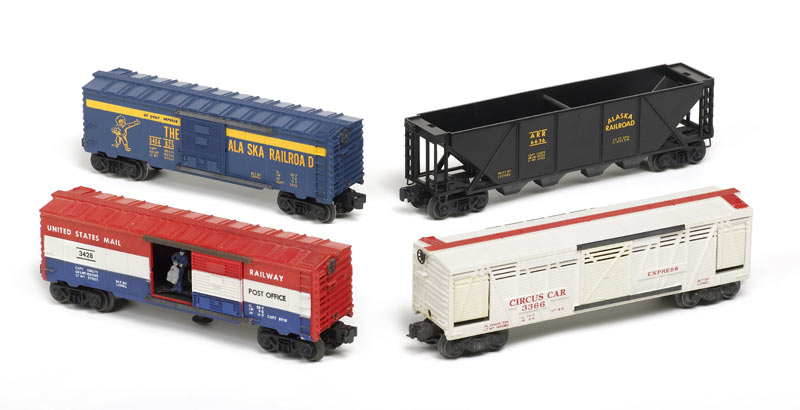
Lionel’s separate-sale items and accessories for 1959 Readers of our article on Super O and O-27 outfits cataloged in 1959 (September 2009 issue) will remember that the company experienced some earth-shaking changes in 1959. The turmoil started at the top, as Joshua Lionel Cowen sold control to Roy Cohn, his great-nephew. This confounding move by […]
Read More…
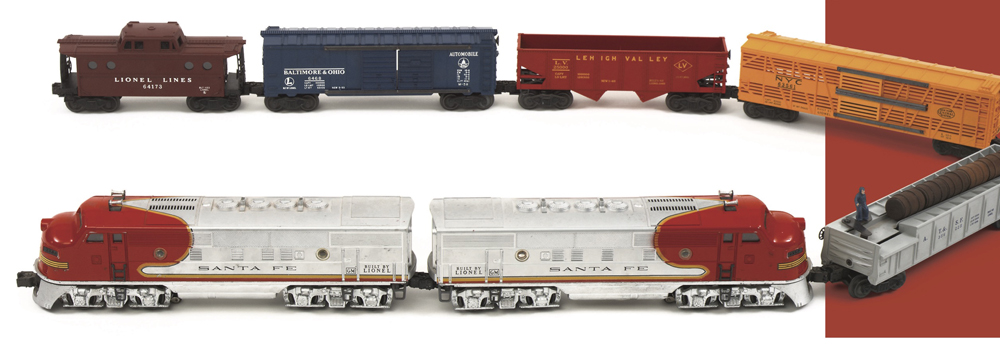
For toy train collectors looking to up their game to include more and collectible pieces without breaking the bank, consider Lionel’s 2227W from 1954. Set No. 2227W, which had a retail price of $69.50 ($795 in 2023 dollars), relied on an iconic A-A combination of Santa Fe F3 diesels as its motive power. The […]
Read More…
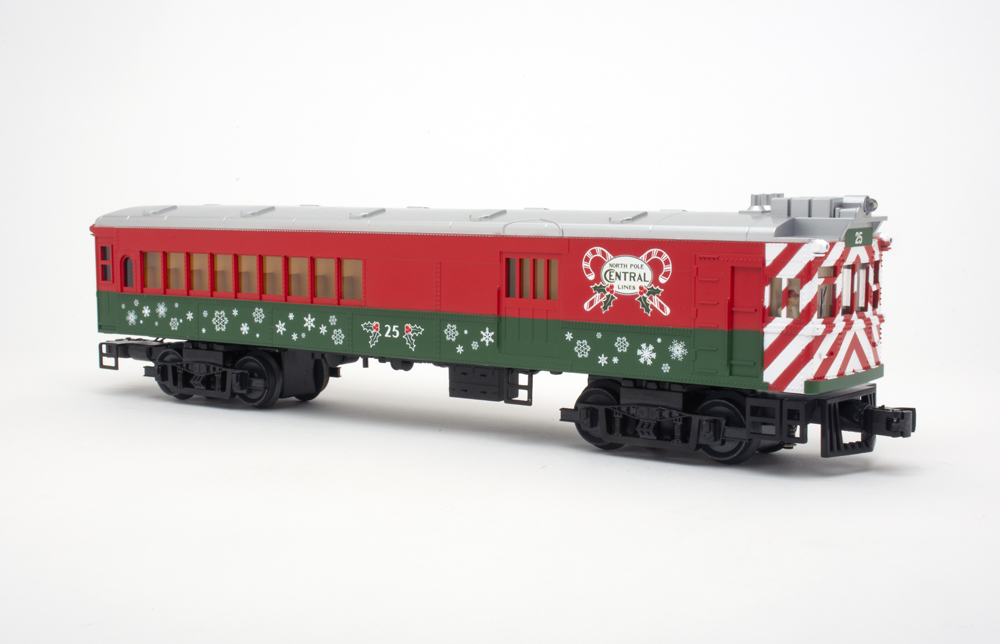
In 2006, then-CTT Associate Editor Bob Keller wrote that the doodlebug held “an interesting place in railroad history.” These self-propelled railcars were developed in the early part of the 20th century and initially powered with gasoline engines (some later were converted to diesel). These railcars were popular with railroads looking to economize service on lightly […]
Read More…
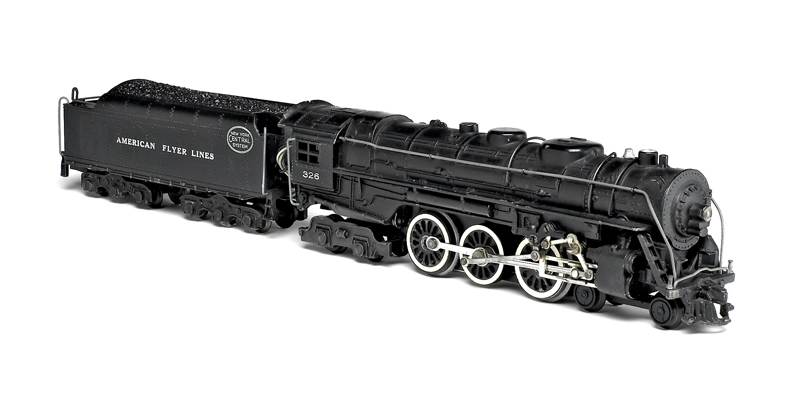
After Gilbert acquired the assets of American Flyer in 1938, it set out to develop a line of 3/16-inch scale models that ran over three-rail track. The firm announced the debut of a die-cast metal 4-6-4 Hudson and tender the next year. The men assembling Gilbert’s first S gauge line for 1946 were eager to […]
Read More…
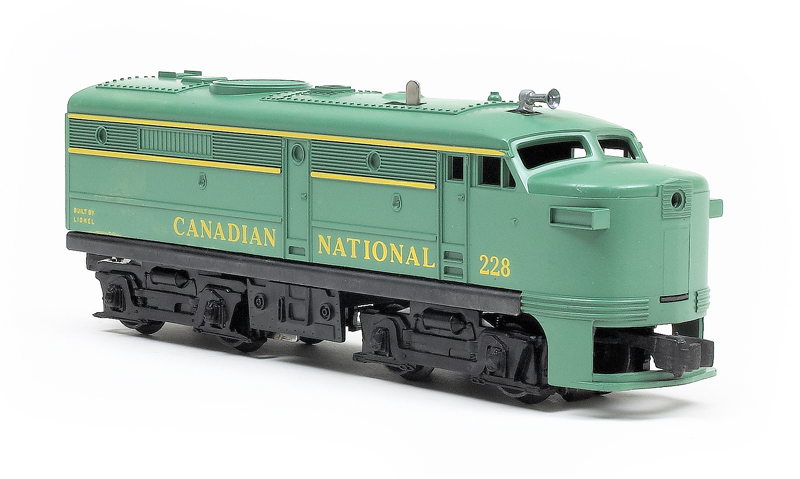
In the years after World War II, Lionel strengthened its presence in Canada by working closely with the heads of its sales office in Toronto. Roy Clarke and his son, William, represented the toy train giant and made sure Lionel had a significant presence in department stores and retail chains across Canada. Evidence of Lionel’s […]
Read More…
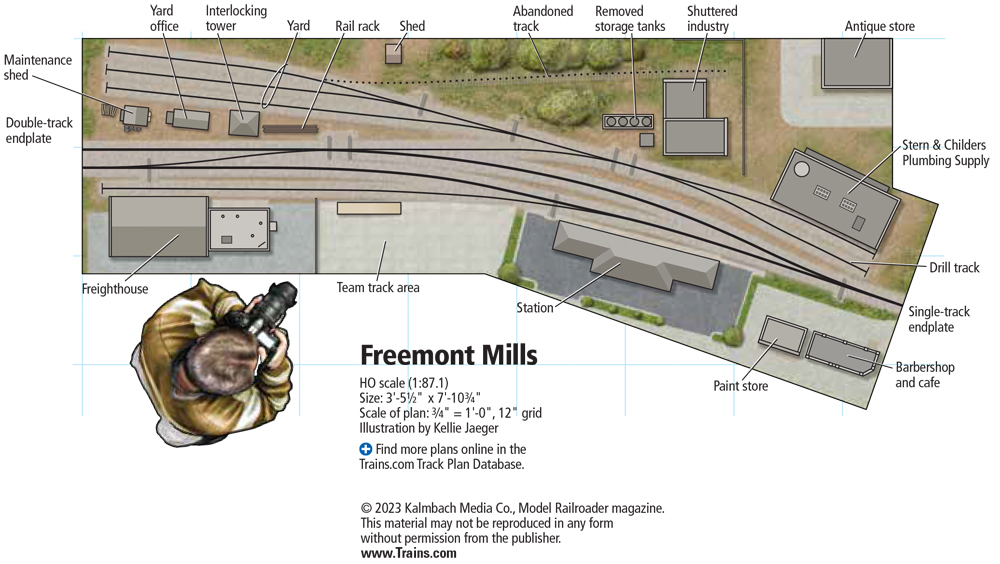
Facts & features Name: Freemont MillsScale: HO (1:87.1)Size: 3′-51⁄2″ x 7′-103⁄4″Prototype: freelancedLocale: Eastern U.S.Era: 1970Style: Free-Mo moduleMainline run: 94″Minimum radius: 60″Minimum turnout: No. 6Maximum grade: noneBenchwork: open gridHeight: 50″Roadbed: corkTrack: Walthers code 83Backdrop: noneControl: Train Control Systems LT-50 Download this trackplan! Buy the January 2023 issue of Model Railroader! […]
Read More…












